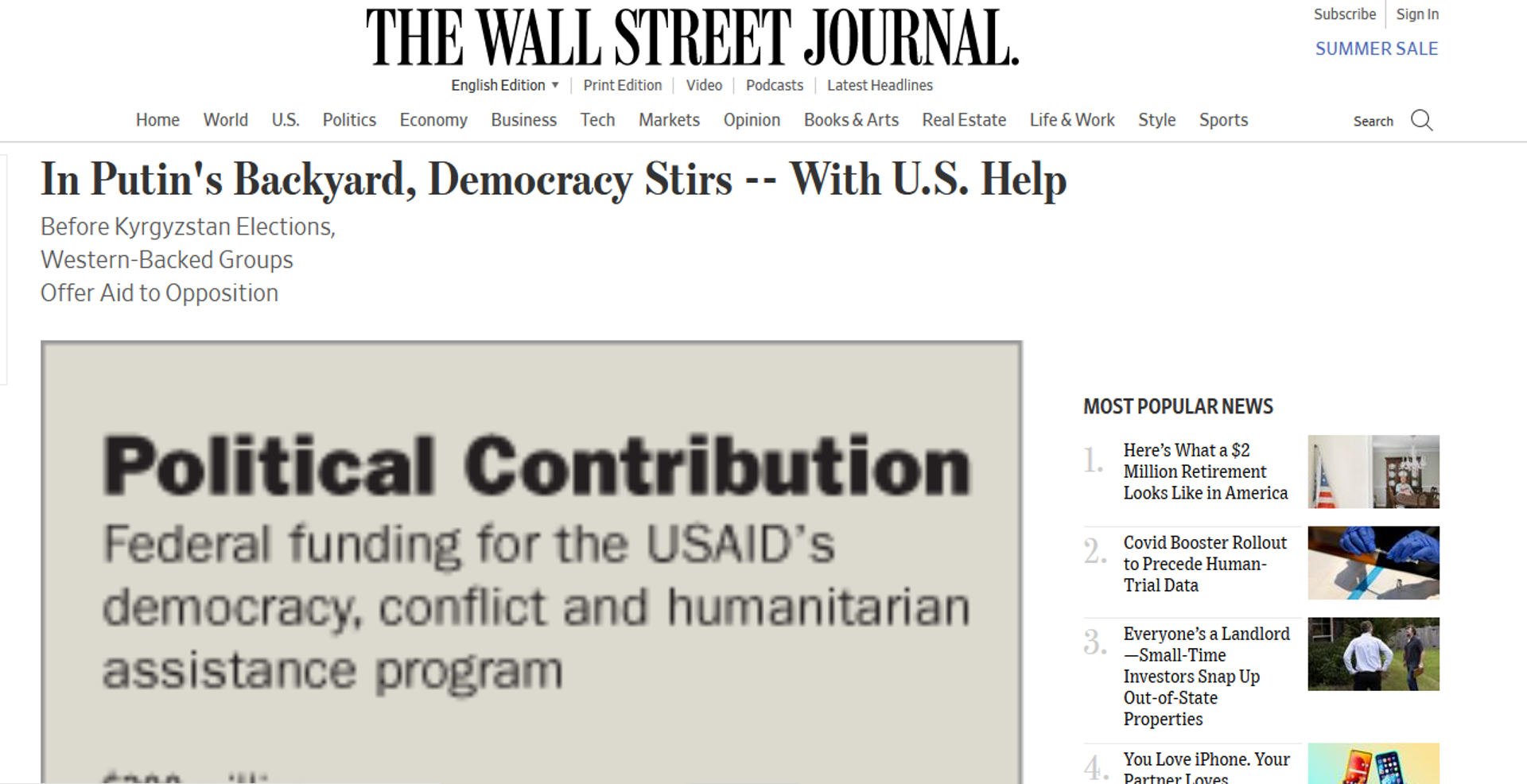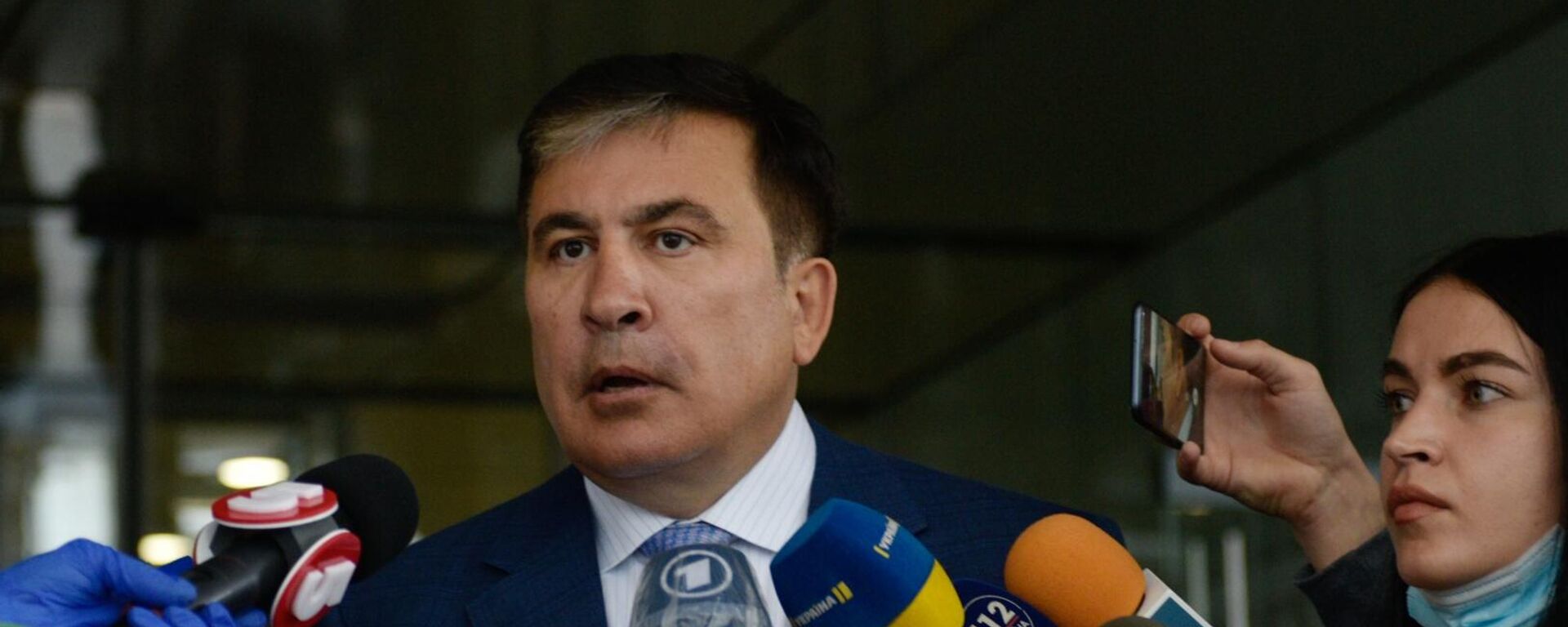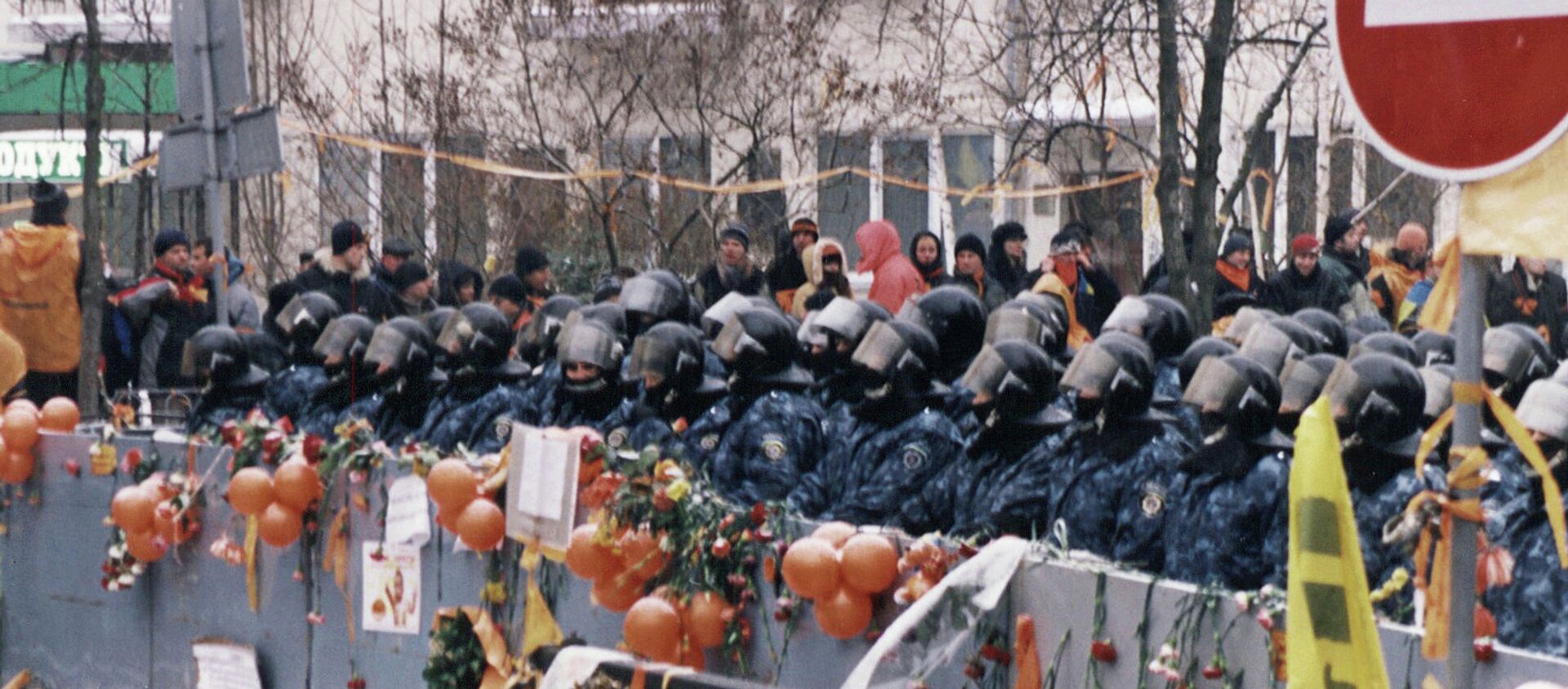Cash for Chaos: Four Times US Toppled European & Central Asian Governments Using the Almighty Dollar
18:22 GMT 29.08.2022 (Updated: 20:56 GMT 19.10.2022)

© AFP 2023 / Robert Atanasovski
Subscribe
The US and its allies have paid over four billion rubles ($66 million US) to “pseudo-pacifist” actors inside Russia since February, Deputy Security Council Secretary Alexander Grebenkin has revealed. The lavish spending is nothing new, and part of a well-worn playbook of interference used by Washington in Eastern Europe for well over 30 years.
Pseudo-pacifistic organizations parroting Western talking points about the Ukraine crisis have accepted tens of millions of dollars in cash from foreign intelligence services, Alexander Grebenkin has alleged.
“In February-March of this year, individual radical structures and individuals who received their ‘thirty pieces of silver’ from abroad attempted to organize so-called anti-war protest events. Now these events has become isolated and do not find support among the population,” the deputy Security Council secretary said in an interview with Russia’s Rossiyskaya Gazeta on Monday.
The US has refined the timely injection of cash to fund pro-Western political and social forces in Eastern Europe and Central Asia into an art form, using the technique repeatedly over the past three decades to get desired political outcomes, pressure national elites to change course, or even collapse sovereign governments.
Ukraine: Starting a Disaster and Bragging About It
In late 2013, several weeks into the Euromaidan protests in Kiev which would culminate in the collapse of the country’s democratically elected government and the installation of a pro-Western, pro-EU, radically nationalist regime, Assistant Secretary of State Victoria Nuland gave a speech about the importance of the “investment” Washington had made in Ukraine’s “civil society.”
“Since Ukraine’s independence in 1991 the United States has supported Ukrainians as they build democratic skills and institutions, as they promote civic participation and good governance, all of which are preconditions for Ukraine to achieve its European aspirations. We’ve invested over $5 billion to assist Ukraine in these and other goals that will ensure a secure and prosperous and democratic Ukraine,” Nuland said at a US-Ukraine Foundation event in Washington, DC on December 13, 2013.
“Today there are senior officials in the Ukrainian government, in the business community, as well as in the opposition, civil society and the religious community who believe in this democratic and European future for their country. And they have been working hard to move their country and their president in the right direction,” the neocon added.
Several weeks later, in February 2014, on the eve of the Euromaidan coup, in a telephone conversation with Geoffrey Pyatt, the US ambassador she had strolled the streets of Kiev with handing out free cookies, Nuland hand-picked Ukraine’s next government. “Yats is the guy!” she famously quipped in a leaked call, referring to Arseniy Yatsenyuk, a politician who got less than seven percent of the vote in the 2010 Ukrainian presidential election, but would be selected as the first prime minister of the post-coup government.
The coup proved a major success, the government of President Viktor Yanukovych was toppled, and Ukraine was thrust into a security crisis which continues to rage to this day. The “investment” paid off.
Cash for Kyrgyzstan
Ukraine was the big prize – the most populous, most highly developed, best-educated and wealthiest former Soviet republic to be turned into a US client state. But it wasn’t the first.
Nearly a decade earlier, in spring of 2005, passionate public-spirited residents of Kyrgyzstan took to the streets to topple the authoritarian government of President Askar Akayev, with his kleptocratic regime swept away by the democratic "Tulip Revolution" uprising. That’s the Western narrative of events, anyway.
Behind the scenes, as major mainstream newspapers like The Wall Street Journal and The New York Times would attest, the groundwork for the “revolution” was prepared ahead of time by the State Department, USAID, Freedom House, the National Endowment for Democracy (aka the "Second CIA"), the National Democratic Institute (NDI), and Radio Liberty. Together with the American University in Bishkek, these organizations and agencies committed tens of millions of dollars to “democracy programs” for opposition forces ranging from cash for "independent" media and civil society groups to scholarships.
“American money helps finance civil society centers around the country where activists and citizens can meet, receive training, read independent newspapers and even watch CNN or surf the Internet in some. The NDI alone operates 20 centers that provide news summaries in Russian, Kyrgyz and Uzbek,” the NYT explained. “All of that money and manpower gave the coalescing Kyrgyz opposition financing and moral support in recent years, as well as the infrastructure that allowed it to communicate its ideas to the Kyrgyz people,” the paper added.

Wall Street Journal article from 2005 explaining how US helped bring "democracy" to Kyrgyzstan.
© Photo : Screenshot / Wall Street Journal
The 2005 coup was one of two US-supported color revolutions to rock Kyrgyzstan. In April 2010, the government of President Kurmanbeck Bakiyev, installed with US support five years earlier, was toppled by other US-backed forces led by Roza Otunbayeva. Her government held on until December 2011, and was eventually succeeded by Almazbek Atambayev, who would seek to restore good relations with Moscow, and to cut off the US’ access to the strategic Manas transit center used by Washington to shuttle troops and equipment into and out of Afghanistan.
Rose Revolution Nourished by Greenbacks
Throughout November of 2003, the Caucasus nation of Georgia was wracked by protests, with people taking to the streets to protest corruption and nepotism, poverty, economic mismanagement, and suspected electoral fraud in parliamentary elections which were held on November 2 of that year. The government of President Eduard Shevardnadze – the former Soviet foreign minister-turned-Georgian president hailed as a “hero” by ex-US Secretary of State James Baker for his role in surrendering Soviet interests in Eastern Europe, scrapping thousands of intermediate-range missiles, and giving Washington a huge chunk of maritime territory in the Bering Sea, had run its course and proven nonviable.
The bloodless coup of late 2003 wouldn’t remain bloodless for long, with Mikheil Saakashvili, a US- and French-educated up and coming politician, taking power and proceeding to rule the country with an iron fist, replacing Shevardnadze’s ancien regime with his own cronies. Five years later, Saakashvili would launch an ill-fated war against the breakaways of South Ossetia and Abkhazia, prompting a Russian intervention.
As in Kyrgyzstan, the groundwork for the coup was laid by Washington, with US Ambassador Richard Miles spending years pushing for a “democratic transition” of power, and the US and its European allies, as well as private interests, such as George Soros’ Open Society Foundations, spending millions on media, "civil society" organizations, and educational initiatives to force Shevardnadze out.
Saakashvili was ousted in 2013 and forced to flee the country amid charges of graft and abuse of power, traveling to the US, where he briefly became a lecturer at Tufts University, and then heading to Ukraine, where he served as governor of Odessa for two years before suffering a falling out with fellow US-backed politician Petro Poroshenko. In late 2021, Saakashvili returned to his native Georgia and was put in prison.
Bulldozer Revolution
The modern concept of Western-sponsored, color revolutionary-style regime change operations has its roots in the final days of the Cold War, with Gene Sharp, a neoliberal political scientist, credited with thinking up the academic core behind the concepts of the color revolution, first tested out in the anti-communist revolutions which rocked Eastern Europe and the former Soviet Union in the late 1980s and early 1990s.
The modern-day prototype behind modern color-coded coups was Yugoslavia’s "Bulldozer Revolution" of 2000, in which President Slobodan Milosevic was successfully overthrown, with a pro-Western government replacing him and sending him off to The Hague on war crime charges he was never convicted of before his death in 2006.
The core behind the 2000 Bulldozer Revolution was Otpor! (lit. "Resistance!"), a foreign-backed civic youth movement receiving funding from the National Endowment for Democracy, USAID, and the International Republican Institute. The NED alone provided the group with nearly $3 million between late 1998 and late 2000, while USAID provided over $30 million for telecommunications equipment, cash for "election monitors," posters, badges, t-shirts, and other goodies.
Otpor! proved so successful that it ushered in a new era of regime change operations across Eastern Europe and the former Soviet Union, the Middle East, Asia, and Latin America throughout the 21st century. Unfortunately for any true believers in the ideals of liberalism and Western-style democratic values, an example of a color revolution that has turned its host country into a thriving, prosperous, democratic place has yet to emerge.



